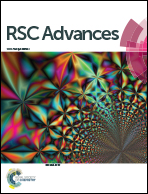Application of red mud as both neutralizer and catalyst in supercritical water oxidation (SCWO) disposal of sewage sludge
Abstract
Red mud was used in the supercritical water oxidation (SCWO) disposal of sewage sludge, not only as a neutralizer for acidic substances produced in situ, but also as a catalyst for decomposition of pollutants. With initial amounts of 2, 4, 6, and 8% of red mud, the total carbon (TC) value of the solid residue increased from 9.16 mg g−1 to 14.88, 17.91, 20.11, and 26.14 mg g−1, respectively. This resulted from the net increase in the inorganic carbon after capturing and absorption of CO2 produced in situ. The pH of the drained water was correspondingly increased from 5.16 to the range 7.67–7.82. This was mainly determined by the balance in the system of soluble inorganic salts (SIS)–remaining organic substances (RS)–CO2–H2O under certain conditions. However, the pH controlling system switched to SIS–CO2–H2O and RS–CO2–H2O as the operating temperature increased and the residence time increased, respectively. An increase in the TOC removal rate was observed by increasing the amount of red mud, and an outcome in excess of 99.3% could be achieved, although at a relatively low temperature of 400 °C by an initial concentration of 8% red mud. Combined with the rise of TOC removal rate after 2% red mud addition confirmed in the experiments with different operating temperatures and that with different residence time, the catalytic effect of red mud was strongly evidenced. It was probably attributable to the active components in red mud at the primary period, and to the fine-grained calcite that formed in situ, along with tricalcium aluminate, perovskite, hematite, and other inorganic salts at the subsequent period.


 Please wait while we load your content...
Please wait while we load your content...